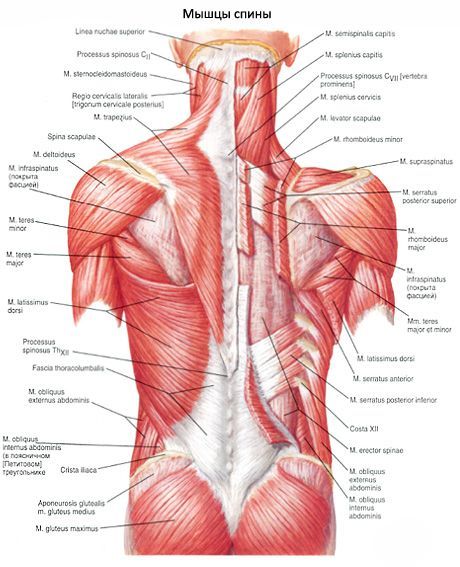Medical expert of the article
New publications
Broadest muscle of the back
Last reviewed: 04.07.2025

All iLive content is medically reviewed or fact checked to ensure as much factual accuracy as possible.
We have strict sourcing guidelines and only link to reputable media sites, academic research institutions and, whenever possible, medically peer reviewed studies. Note that the numbers in parentheses ([1], [2], etc.) are clickable links to these studies.
If you feel that any of our content is inaccurate, out-of-date, or otherwise questionable, please select it and press Ctrl + Enter.
The latissimus dorsi muscle (m. latissimus dorsi) is flat, triangular in shape, and occupies the lower half of the back on the corresponding side. The latissimus dorsi muscle lies superficially, with the exception of the upper edge, which is hidden under the lower part of the trapezius muscle. Below, the lateral edge of the latissimus dorsi muscle forms the medial side of the lumbar triangle (the lateral side of this triangle is formed by the edge of the external oblique muscle of the abdomen, the lower - by the iliac crest). The muscle begins with an aponeurosis on the spinous processes of the lower six thoracic and all lumbar vertebrae (together with the superficial plate of the lumbothacral fascia), on the iliac crest and the median sacral crest. The muscle bundles are oriented upward and laterally in the direction of the lower border of the axillary fossa. At the top, the muscle is joined by muscle bundles that start on the lower three to four ribs (they go between the teeth of the external oblique abdominal muscle) and on the lower angle of the scapula. Covering the lower angle of the scapula from behind with its lower bundles, the latissimus dorsi muscle sharply narrows and passes into a flat thick tendon that is attached to the crest of the lesser tubercle of the humerus. Near the place of attachment, the muscle covers the vessels and nerves located in the axillary cavity from behind. Between the large round muscle and the latissimus dorsi muscle there is an intermuscular synovial sac.



 [
[